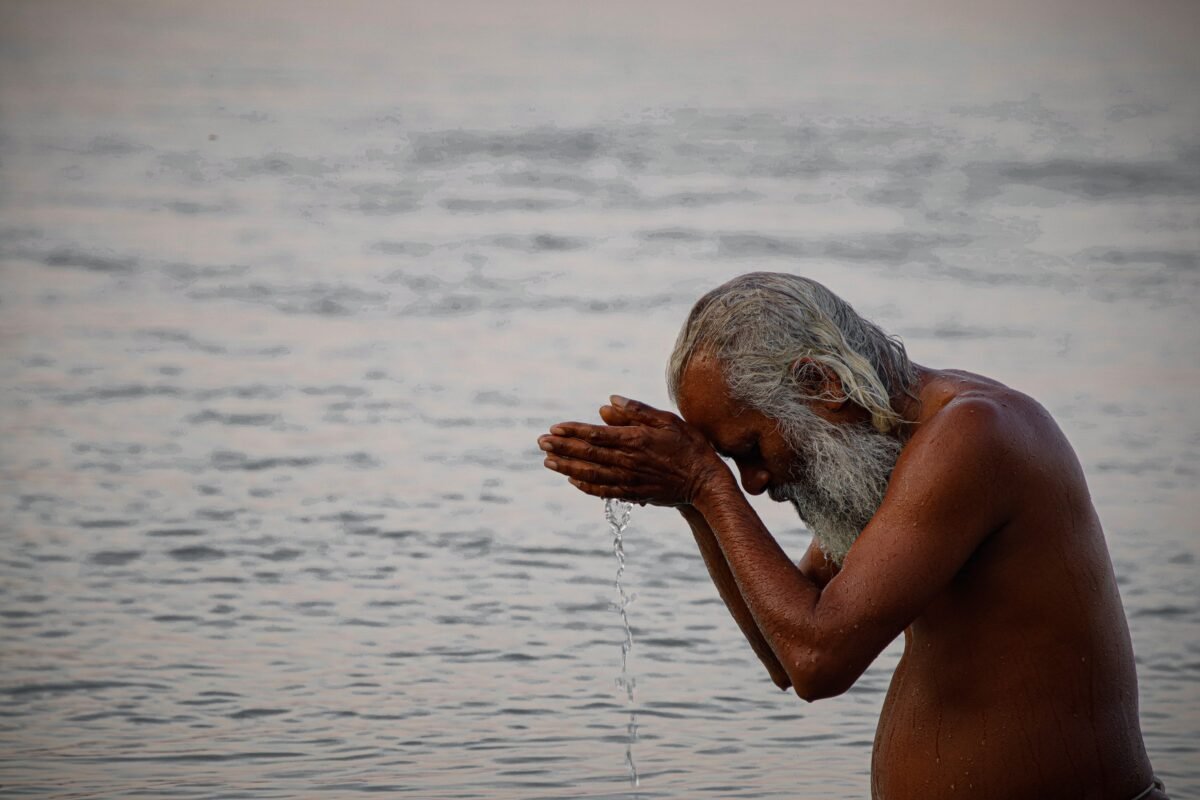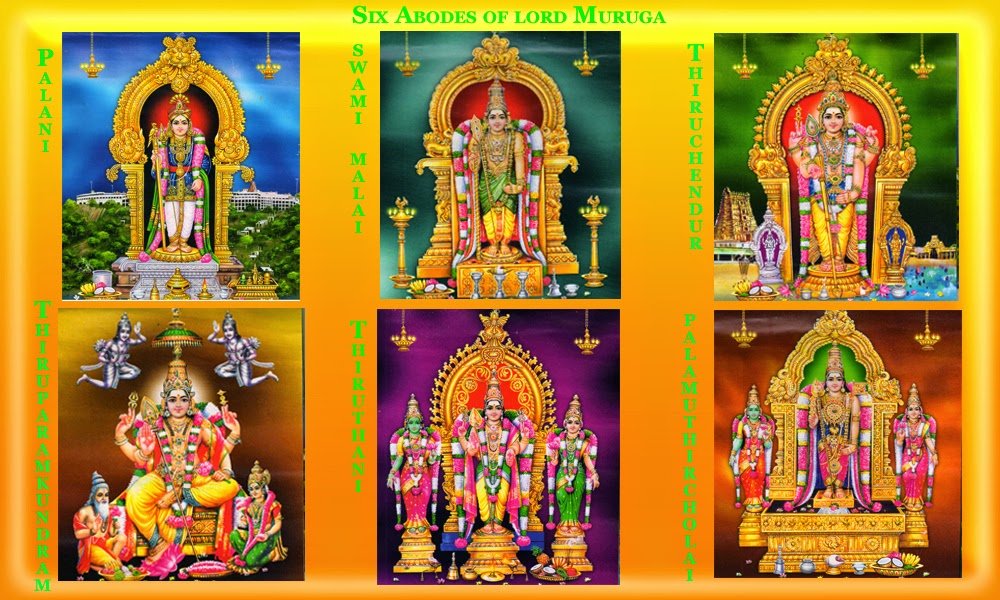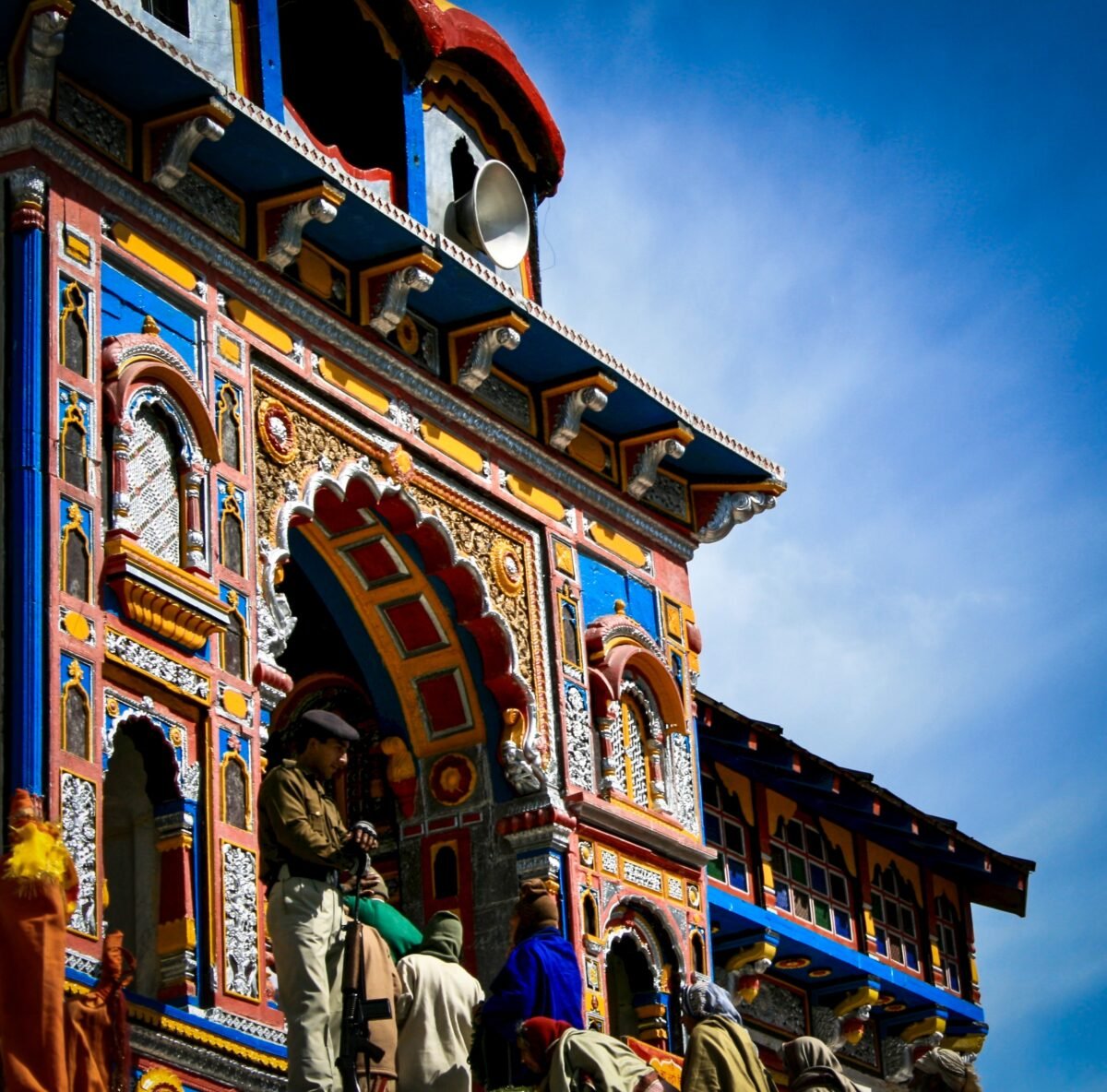Pasamos toda nuestra vida sin entender por qué vinimos a este mundo. Muchas preguntas y dudas surgen al anochecer para la mayoría de nosotros. Cualesquiera que sean las dudas, preguntas y temores que no han surgido durante los años de entrenamiento y juventud, ir a casa y posarse en los años crepusculares. ¿Vivimos correctamente? ¿Hemos hecho las cosas importantes en la vida? ¿Tenemos remordimientos? todas estas dudas y temores surgen durante los años crepusculares. Pero los Gnanis tienen un punto de vista diferente porque saben que una vez que salgan de este cuerpo físico, estarán unidos con Siva. Así, se asocian con todas las actividades relacionadas con Siva durante la estancia en este mundo. ¿Quién es un Siva Siddhar y cómo son? ¿cuáles son las diferencias entre los Siddhars y los Siva Siddhars? Todos estos temas se tratan en profundidad en Thirumanthiram.
Objetivos en la vida
Hay una diferencia entre Saiva Siddhantham y Siddhantha Saivam en la raíz. Siddhantha Saivam es un Samayam (tenga en cuenta que es diferente de la religión y no tiene palabra en el léxico español) Mientras que Saiva Siddhantham es un Tatuvam (Principio). Siddhantha Saivam es el destino y Saiva Siddhantham es el camino. Así que Siva no es el destino, sino también el camino. ¿Cuál sería la respuesta de una persona cuando les preguntes su propósito en la vida? La respuesta genérica sería comprar una casa, casarse y establecerse con hijos. Otros dirán que querrán ser independientes hasta el final. Todos tendrían metas diferentes en la vida. Saint Thirunavukkarasu canta que tenía diferentes objetivos en diferentes etapas de la vida. Un estudiante de una universidad cree que obtener un título es su objetivo. Una persona con un título cree que conseguir un trabajo es su objetivo. Una persona que tiene un trabajo cree que el matrimonio es el próximo objetivo. El objetivo de una persona casada es encontrar una manera de enviar a sus padres a una residencia de ancianos (surcasm). Como podemos ver, las porterías siguen cambiando en diferentes épocas de la vida. Saint Appar canta que no todos estos objetivos son reales.
Entender la vida y por qué vinimos aquí y centrarnos en su logro es el verdadero objetivo.
¿De verdad estamos despiertos?
Hay tantas formas de vida que entran y se alejan de este mundo. ¿Nuestra vida se parece a otras formas de vida? Los seres humanos tienen la suerte de tener unsexto sentido, mientras que otras formas de vida tienen 5 significados. Dar forma a nuestras vidas para entender la vida misma y la razón de nuestro nacimientoes el verdadero objetivo. Algunas personas se dan cuenta de esto a una edad temprana, otras durante su adolescencia, pero otras ni siquiera en la vejez. ¿Qué es Saivam? esto se le preguntó a Thirumular. Algunas personas piensan que Saivam significa personas que son vegetarianas. Asumen erróneamente que es un hábito de comer vegano. Tirumoolar dice que saivam significa convertirse en uno con Siva. Todos pensamos que estamos lúcidos cuando están despiertos, pero en realidad estamos durmiendo a pie. Si le preguntas a alguien si Dios está presente, la persona responderá de una manera dudosa. Cuando sean presionados, dirán que Dios aún no le ha dado a esta persona todo lo que ha pedido, para que Dios no esté presente. Todos pedimos tanto, pero nunca preguntamos por qué estamos aquí y qué estamos haciendo aquí en este mundo? Saint Tirugnanasambandar hace estas preguntas a Siva.
El significado del nombre de San Tirugnanasambandar hace que el Atmas sea uno con Siva en Gnanam.
Convertirse en uno con Siva
Una vez que nos convertimos en uno con Siva, somos liberados de todo sufrimiento instantáneo. El primer paso es convertirse en uno con Siva en relación con este cuerpo físico. En este estado, aplicamos la ceniza sagrada (thiruneer), llevamos el Rudraksha, oramos, limpiamos el templo y las actividades relacionadas. Todas estas actividades están relacionadas con el cuerpo. El siguiente paso es convertirse en uno con Siva en pensamientos. Esto incluye pensar en Siva, escuchar canciones, discursos, etc. relacionados con Siva, mezclarse con otros devotos de Siva. El tercer paso es convertirse en uno con Siva a nivel de vida. Cuanto más cerca está Siva a este nivel, el atma tiene menos vínculos que lo unen al sufrimiento. Cuanto más sufrimos, más lejos estamos de Siva. Cuanto más pensamos en Siva, más lejos estamos del sufrimiento.
Siempre que hay sufrimiento, tienes que ir a uno de los tirumurese para asociarte con Siva.
Cruzando los tatuvams
Una vez que seamos aceptados Siva como El Uno, entonces no debemos aceptar a ningún otro dios como tal. Esto no significa insultar o faltar al respeto a otros dioses. Siva es el Supremo y la comprensión de que Él es el principio y el fin de todo y todo lo demás. Hacemos hincapié en que somos esclavos de Siva en el momento en que aplicamos la ceniza sagrada.
Una vez que uno comienza en este camino de Siva, la compasión y el amor crecen y donde la compasión y el amor de gusano están presentes, la felicidad se manifiesta.
Los Veersaivars siempre usan siva lingam alrededor de sus cuellos. Ni siquiera permiten que otros lo vean mientras lo hacen. No mirarán a ningún otro Dios más que a Siva. Todos somos saivaitas, y vamos a otros templos. Incluso esperamos unos días para llevar a Darshan a algunos templos. Pero los saivaitas veera son tan devotos que ni siquiera piensan en otros dioses. San Tirugnanasambandar sólo piensa en los pies santos de Siva. Cruzar los tatuvams no es fácil. Incluso superar el simple tatuvam relacionado con el lenguaje es extremadamente difícil y tenemos 31 tatuvams que superar. Cuando uno está impregnado de devoción a Siva, entonces lo que se considera un obstáculo se convierte en un paso hacia lo Divino. Cuando te dediques a Siva en todos los niveles, quédate cerca de Él en cada oportunidad, y luego cada tatuvam se convierte en un trampolín. Siva Siddhars son los que lo hicieron y alcanzaron los Pies Santos de Siva. Tienes que mirar a los tatuvams como escalones en una escalera y subirte a ellos, uno por uno.
Hacer la Ces
Cuando decimos superar el tatuvam del idioma, no significa que debamos dejar de comer o hablar. Esto significa que uno entiende y se da cuenta de lo que es realmente el lenguaje y se vuelve estoico con él. El ojo vuelve nuestra mirada a incluso las cosas que están lejos. Pero la verdadera comprensión es que los ojos fueron dados para mirar a Siva y Sivan Adiyargal. Así que tienes que cuidarlo y mantenerlo saludable para poder realizar este tipo de acciones empapadas en Siva. Lo que necesitamos al final del día es conseguir a Bliss. Esta felicidad sólo crece en Siddhi (Cit). Pero este Cit está oscurecido por la ignorancia. Cuando se suprime esta ignorancia, la felicidad ocurre naturalmente. Sólo en Saiva Neri, Dios es considerado Cit. Otras creencias no consideran a sus dioses citados.
La ignorancia que cubre nuestro Atma y evita que se destaque el Cit sólo puede ser eliminada de la compasión (Anbu).
Un hombre rico y poderoso tenía mucha gente que trabajaba para él. Una vez, entró en una habitación oscura y pidió a sus matones que golpearan y eliminaran la oscuridad de la habitación. ¿Esto va a funcionar? Luego les pidió que dieran dinero a la oscuridad y que lo quitaran. ¿Esto va a funcionar? pidió a sus matones que sirvieran mucha comida en la oscuridad y que la eliminaran. ¿Funcionará de nuevo? Pero cuando traes una pequeña lámpara encendida a la habitación, disipa la oscuridad. Esto muestra que la Luz solo puede eliminar la oscuridad. Por lo tanto, la ignorancia que envuelve a nuestra Atma no puede ser eliminada por la educación, el conocimiento, la riqueza, el poder, etc., sino sólo a través de la compasión. Muchas personas piensan que el conocimiento puede eliminar o disipar la ignorancia. Pero podemos ver que las personas con muchos títulos o educación no son las personas más felices. Cuando se elimina la ignorancia, la felicidad debe ocurrir y brillar por defecto. Por lo tanto Brahma,el señor del conocimiento no podía encontrar la cabeza de Siva y Vishnu el señor de la riqueza,no podía encontrar los pies santos de Siva. Cuando Brahma y Vishnu no pudieron ver siva con todo su conocimiento y riqueza, ¿qué esperanza tenemos? esto demuestra que estos son útiles sólo para mostrar en este mundo material y no más que eso, pero no nos llevará a los Pies Santos de Siva.
“Cuál es el punto de la educación y la riqueza si no conduce a los Santos Pies de Dios”.
Saint Thiruvalluvar Deva Nayannar
Un niño llora cuando una madre sale a correr. No importa cómo trates de entretener al niño con juguetes y dulces, el niño siempre chupa con su madre. Cuando la madre regresa, el niño se convierte en un paquete de felicidad. Del mismo modo, los adiyars son como los niños que siempre están en un estado de conciencia Siva encada respiración. No tienen ningún interés en los asuntos mundanales o las cosas materiales, pero sólo quieren para Siva.
Adoración con compasión
Muchas personas piensan que la estatua en el templo es Sivam y es suficiente para simplemente orar a la estatua. Pero el verdadero significado está lejos de serlo. Lo que es es, de hecho, una encarnación de la compasión. Espera día y noche y más esperando que un día, en lugar de mirar afuera, miremos dentro de nosotros mismos. Siva es felicidad. La devoción siva es felicidad. Encender una lámpara, ofrecer una flor, etc., no se supone que sea sólo una acción, sino un acto de adoración con compasión. Cuando uno hace esa devoción Sivacon compasión, todo el sufrimiento y el deseo se lavan, y la felicidad comienza a germinar. Esta felicidad germina de vez en cuando cuando escuchamos Thevaram, hace que laSiva pujai,piense y hable de Siva y sus Adiyars. El hecho mismo de que estés leyendo esto se debe a Su Gülen y no porque hayas decidido leer esto.
Sin Su Gracia, ni siquiera podemos esperar conocerlo.
Por lo tanto, los Siva Siddhars no piden nada más que todo conduce a los Pies Santos de Siva. Whereas consideramos cada tatuvam como un obstáculo, los Siva Siddhars los consideran como herramientas para obtener la Felicidad de Siva. Así que cuando cruzan cada Tatuvam, obtienen un néctar de felicidad. La felicidad es tal que ninguna palabra o emoción es suficiente para explicarla o expresarla. Uno puede notar que la energía simplemente en compañía de Siva Siddhars.
Thinnanar había estado cazando un jabalí durante mucho tiempo. Después de un tiempo, el jabalí se cansó y frenó. Usando esta oportunidad Thinnanar localizó al jabalí. Cuando terminó, recordó que tenía sed y hambre, pero que lo había olvidado cuando cazaba al jabalí. Del mismo modo, corremos detrás de las cosas materiales en la vida y olvidamos a Dios mientras estamos en persecución. Pronto, los amigos de Thinnanar nanan y kanun llegaron después deuntiempo. Kanaño comenzó a preparar un fuego para cocinar eljabalí y nanan fue con Thinnanar para conseguir un poco de agua. Thinnanar y nan n o incluso una arboleda a distancia y caminar a buen ritmo para llegar al río junto a la arboleda. Al acercarse a la arboleda, ven una colina y Nanan dice que era el monte KaenLathi. Nanan añade entonces que Kudimi Devar reside en la misma colina. Los ojos de Thinnanar brillan cuando escucha el nombre de Kudimi Devar, y tiene un ardiente deseo de ir a verlo. Nanan y Thinnanar cruzan las aguas profundas del río. Cruzando el río, Nanan le recuerda a Thinnanar que debería beber un poco de agua porque tenía sed. Pero Thinnanar estaba totalmente inmerso en la idea de ver a Kudimi Devar a quien olvidó que tenía sed. Thinnanar cruzó todo el río sin beber ni una gota de agua. Pronto Nanan comenzó a subir y Thinnanar siguió. Saint Sekkizhar escribe elocuentemente que incluso si Thinnanar lo seguía, su compasión era antes con Nanan. Saint Sekkizhar señala que el acto mismo de subir los escalones fue el acto de cruzar y superar los 36 tatuvams. Sólo por la virtud de Nanan, Thinnanar se entera de Kudimi Devar y por lo tanto nanan aquí se convierte en el gurú también, mostrando el camino de Kudimi Devar.
Sólo dos cosas acompañan a una al final de su vida. Buenas y malas malas malas cosas. Nanan y Kanan no son más que karma bueno y malo.
Mostrar felicidad
Patinathar canta melancólicamente que Thinnanar ha llegado a los Santos Pies de Dios en 6 días y se pregunta si tiene tal nivel de devoción como Thinnanar. Eso no significa que tengas que renunciar a todo y convertirte en una persona peor. Pero estos sentidos deben ser utilizados en cada oportunidad para pagar la reverencia de Dios en cada paso. Los sentidos son sólo un medio y no el final en sí mismo. Uno obtiene felicidad mientras usa los sentidos para pagar la reverencia en Siva sin siquiera esperarla. Los tatuvams en estado puro dan felicidad y los tatuvams que están en un estado impuro dan sufrimiento.
Los tatuvams van de un estado impuro a un estado puro a través de su acción concertada de adoración y devoción a Siva y por lo tanto la felicidad se manifiesta.



